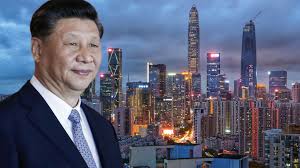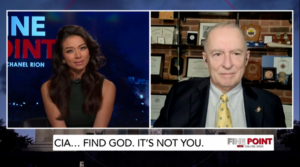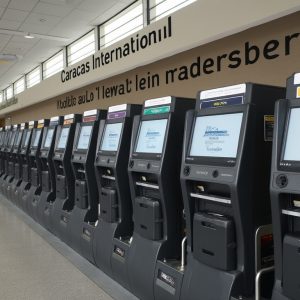by Jeems Akers, Senior Fellow, Americans for Intelligence Reform
“Let China sleep, for when she wakes, she will shake the world.”
Napoleon Bonaparte
“Strategic competition with China is a defining feature of the 21st century. China is engaged in conduct that hurts American workers, blunts our technological edge, and threatens our alliances and our influence in international organizations.”
Jen Psaki
President Biden’s White House Secretary
Fifty years ago (July 1971), then-President Richard M. Nixon’s primary national security adviser, Henry Kissinger, arranged a secret flight aboard a Pakistani plane to meet with his Chinese counterpart Zhou Enlai in a bid to open diplomatic relations with Mao Zedong’s Communist China. This event, in turn, “triggered the greatest shift in global politics since the end of World War II.”1
Indeed, it did.
And, as we shall see below, the shift continues.
It is a testimony to the longevity and lingering influence of 97-year-old
Henry Kissinger (the Cold War champion of the global elites and sole surviving major player of those remarkable events in 1971), that in late November 2020, with an eye toward influencing the incoming President Biden administration, Kissinger offered his view on how to avoid a U.S.-China conflict: establish “an institutional system by which some leader that our president trusts and some Chinese leader that President Xi Jinping trusts are designated to remain in contact with each other on behalf of their presidents.”2 Presumably, Kissinger himself would play a role in such an arrangement.
Newly-elected President Biden, however, appears more inclined (at least in the early going) to follow the policy laid out by his predecessor President Trump than follow Kissinger’s advice. The major difference with his predecessor appears to be President Biden’s strong emphasis on multilateralism.
In the first couple weeks of the new administration, Chinese leaders are testing the new president’s resolve: Chinese Air Force aircraft have repeatedly intruded into Taiwanese airspace, Chinese senior military officials are making bellicose statements, and recent directives from Beijing give Chinese naval and coast guard commanders in the South China Sea more autonomy to fire on foreign ships and installations.
The political rub for Beijing: the invitation and attendance of Bi-khim Hsiao—the de facto Taiwanese ambassador to the U.S.—at President Biden’s inauguration (the first time since 1979).3 In addition, a powerful U.S. carrier group headed by the USS Theodore Roosevelt entering the South China Sea to preserve freedom of navigation rights.
Of course, China’s President Xi Jinping responded in kind this week— speaking virtually to the World Economic Forum in Davos, Switzerland on Jan. 25, 2021, he warned that confrontation would lead to a “dead end.”4 On the same day, China’s state-run Global Times published a strongly worded editorial: “If the Biden administration does not want the situation to get out of control or get itself seriously involved, they should send out a clear political signal to distinguish themselves from the previous administration’s mischief, and restore the control- ability of the Taiwan Straits on the basis of the one-China principle.”5
China’s willingness to flex its diplomatic and military muscle shows the Middle Kingdom has come a long way in fifty years.
But back to 1971. At the time, I was 22 years old, recently enlisted in the Air Force and studying Chinese Mandarin at the Defense Language Institute in Monterey, California. At the time, I had no idea of the monumental changes unfolding on the opposite side of the world nor, I suspect, did our language instructors, many of whom had fled mainland China to Taiwan along with Chiang Kai-shek’s retreating forces. Even if I would have had a crystal ball at that time which would have allowed me to catch a glimpse of the historical importance of those events, I doubt I could have guessed the impact of China-related events on the future trajectory of my life. In short, I was too preoccupied with my own personal orbit of challenges to even notice.
Within months of Kissinger’s history-making flight, I was flying eight times a month from Kadena Air Force Base in Okinawa, Japan, to the Gulf of Tonkin as a flight crew member in the back-end of then-classified RC-135 aircraft. The plane was an airborne listening post—one of our many technological “ears”—to what was happening during an intense aerial campaign over Vietnam. Our assignment at that time was to protect our aircraft from potentially hostile Chinese aircraft as we flew along the Chinese coastline to get to the Gulf of Tonkin. Our time of service in the war zone overlapped with President Richard Nixon’s groundbreaking trip to Beijing, the “Operation Linebacker” bombing campaign over Hanoi and Haiphong during the Christmas season in 1972 [designed to force the Vietnamese to release American POWs], and diplomatic efforts—led by Kissinger in Paris—to end our country’s involvement in the Vietnam War.
One of my most lasting memories of those months: while flying the night the ceasefire went into effect, our positions monitored an endless flow of chatter and morse-code communications from North Vietnamese tank units rolling southward—in direct violation of the ceasefire.
Sigh.
Our political leadership said nothing: we clearly had lost the stomach to fight.
At any rate, my brief stint in the military as a Chinese linguist triggered a life-long passion to study Chinese culture, language and history. My favorite history course to teach, by far, is the Modern History of China. Over the years, I have had the privilege of teaching that course to college students at Alice Lloyd College (located in the remote Appalachian Mountains of Eastern Kentucky) and, more recently, as a visiting professor at the College of the Ozarks (located in Point Lookout, Missouri, near the Ozarks entertainment mecca of Branson).
Subsequent events unfolding in China crisscrossed my professional career. In the summer of 1989, for example, I was the oldest member of my law school class (after spending eleven years as a college professor and administrator at Alice Lloyd College). I clearly remember watching television one evening while sitting in the small living room of our rented apartment near the law school campus. I, along with millions of other viewers, was mesmerized by the screen image of one man—a Chinese college student—bravely standing in front of a column of tanks heading toward Tiananmen Square to crush a student-led demonstration in Beijing. That image stands out in my mind above all others related to that historical event. (The authoritarian regime in China has done their best to erase this image, along with poems posted on the “Freedom Wall” and all other vestiges of the ’89 Democracy Movement, from the country’s history books). Our country’s leaders were strangely silent in responding to the subsequent crackdown on Tiananmen protestors, content with slapping the regime’s hand with token public gestures and largely meaningless economic sanctions.
Why?
U.S. leaders then—as in the four administrations prior to President Trump— were unwilling to risk ruffling Beijing’s feathers, despite the overwhelming evidence of widespread technological theft, a tsunami of commercial and military espionage and repeated human rights violations. Indeed, a couple years ago, then Defense Secretary Mark Esper described China as perpetuating the “greatest intellectual property theft in human history.”6 Shortly before I retired from the intelligence community, I took a trip to Southeast Asia (in part) to warn several of our sister intelligence services in the region that China was not only stealing U.S. military technology but was also “eating their technological lunch and popping the bag.” At the time my plea fell on empty ears as many regarded such warnings as the whining of those who had been beaten at their own game.
Perhaps they were partially correct.
So, what happened?
In truth, a decade prior to the Tiananmen massacre, one diminutive Chinese
leader orchestrated one of the greatest public relations coups of all time: in 1979, Chinese leader Deng Xiaoping (the same leader who would subsequently authorize the violent military crackdown on the protestors) conducted a whirlwind nine-day tour of the U.S., the first visit by a Chinese leader since Chiang Kai-shek in 1943. I can still remember the photo of Deng wearing a Stetson cowboy hat that slid down over his ears. He was treated like a hero by the media.
Deng Xiaoping (1904-1997), hailed by many as the “architect of modern China,” more than any other modern Chinese leader, laid the groundwork for China’s miraculous technological transition. His famous “Four Modernizations”— in agriculture, industry, science and technology, and military—allowed the country to engage in a series of reforms (gaige kaifang, reforms and openness) combining socialist ideology with free market principles. After 1980, Deng attracted foreign companies to a series of “Special Economic Zones” where foreign investment and market liberalization were encouraged.
The first of these SEZ’s, Shenzhen (the Chinese characters literally mean “deep drainage”) was a sleepy little fishing village located close to Hong Kong. Today, Shenzhen is an ultra-modern city of over 13 million people (actually over 20 million if you include short-term residents and floating migrants) and home to some of China’s largest hi-tech corporations (Tencent, ZTE, Huawei, DJI—the world’s largest drone company—and BYD). The city is the closest thing China has to Silicon Valley. Shenzhen is home to several research institutions, has the fifth- highest number of billionaires of any city in the world, one of the world’s leading commercial and financial centers, the third busiest container port in the world, and ranks as one of the world’s leading hubs of research and innovation.
Why spend so much time talking about Deng and Shenzhen?
Some three decades ago when I began writing my Christian fiction novel, I placed two or three key scenes in a future Shenzhen and, in the process, predicted its amazing growth. As you can imagine, I have had to edit those scenes continually over the years to maintain the futuristic feeling of the novel. In this case, the reality of Shenzhen’s amazing technological growth has outpaced even my imagination.
Today, China has become the U.S.’s primary technological rival, with leading Biden officials calling for a stronger response to China’s growing ascendance in AI and other emerging technologies.7 A U.S. group of hi-tech executives assembled in the summer of 2020 to address difficult questions of U.S. competitiveness with China recently issued a report that warns: “China plays by a different set of rules that allow it to benefit from corporate espionage, illiberal surveillance, and a blurry line between its public and private sector.”8 (In future missives, I hope to address several China-related technological issues and the corresponding effect on our national security).
Why, in my view, is all this so important?
Eleven years after the Tiananmen Square episode (or was it twelve), I was in London, England, attending an intelligence exchange with our allies. Some of our meetings were held in the Admiralty Building in a grand room dominated by the largest mahogany table I have ever seen. Adorning the room’s walls were the busts of the great naval champions of the British Empire, Lord Nelson, Sir Edward Hawke, Sir Francis Drake, and Lord Mountbatten among them. At that moment, and in that place, I had an epiphany that has stayed with me ever since: did the individuals who sat at this very table during the glory days of the British Empire, even as late as World War II, realize that their empire was on the cusp of decline?
As 2021 begins to unfold—and as a new administration settles into Washington D.C. after a controversial and closer-than-expected presidential election—the memory of that personal insight in London stays with me. Only this time it is not the fading greatness of the British colonial empire that troubles me: it is the nagging sensation that the heyday of the American Empire is passing before our eyes. Our many enemies—foreign and domestic—are gathering to feast on the carcass.
Chief among them—the authoritarian Communist Party rulers in China.
By any stretch of the imagination, it has been an amazing couple years for Xi Jinping and the Chinese leadership. They entered into this period of time with several problems: a slumping domestic economy; an increasingly hostile Trump administration in Washington actively moving against Chinese technological companies, U.S. Navy maritime maneuvers in the South China Sea, and new diplomatic overtures to Taiwan; international pressure stemming from Beijing’s harsh treatment of China’s Muslim Uighur population; and, massive student-led demonstrations in Hong Kong. Then, either by a stroke of incredibly good fortune or design, a worldwide pandemic began—which some WHO officials now admit began in the Chinese city of Wuhan. (After weeks of dragging their feet on hosting an investigative WHO team, it remains uncertain how much autonomy Beijing’s officials will allow. Meanwhile, many experts refuse to rule out the role of a secret military lab as one plausible explanation for SARS-Cov-19’s origin).
All one big coincidence?
I wonder. Am I conspiracy-minded for wondering if these dots connect? Take, for example, recent news footage of thousands of Chinese celebrating
the arrival of the new year in Wuhan—the starting point of the pandemic—while the traditional ball-dropping ceremony in New York was greeted by empty streets and a massive city-wide lockdown.9
There’s more. Today, China’s economy has rebounded as the disease has brought economic activity elsewhere to a virtual standstill; Trump has been unseated due—in large part—to the pandemic; international criticism of Beijing for its human rights violations has been muted; and, in Hong Kong, a harsh new security law has been enacted with hundreds of the demonstrators now imprisoned.
Indeed, after the developments of the last couple years, these days there appears to be only one thing striking fear into the hearts of President Xi Jinping and the party elites: the exponential growth of evangelical Christians in China despite massive government crackdown efforts. According to some estimates, by 2030, there will be over 300 million Chinese Christian believers. Indeed, as Christianity grows in China, the faith appears to be fading in America. At the same time, in worldly terms, we are growing more like China every day: more government control, hi-tech censoring, rampant radical secularism, leftist social programs and the coming acceptance of Chinese-style social credit programs.
Wouldn’t it be just like God to make China a powerhouse of future Christian missionary outreach activities while we—in the “land of the free”—slip steadily into a humanistic paganism that is hostile to God?
1 Daniel Casse, “The Future Turns 50 This Year,” The Wall Street Journal, Jan. 1, 2021. [The opinion piece includes several other momentous events that happened during that year. A Federal Communications Commission’s decision which, in effect, ended AT&T’s monopoly over long-distance and business telephone service; the end of the postwar Bretton Woods system of international finance by virtue of President Richard Nixon’s announcement that the U.S. would no longer allow foreign governments to exchange dollars for gold (thus severing the link between the dollar and gold and ushering in floating exchange rates, “petrodollar” agreements and central-bank interventions in the global economy); the opening of Walt Disney World in Orlando, Florida; and, the introduction of Intel’s 4004 chip (the first microprocessor and the launch of the computer revolution)].
2 For a critical assessment of Kissinger’s role in recent U.S.-Sino relations and his public comments following the Bloomberg New Economy Forum, see Joseph Bosco, “Kissinger tells Biden to go easy on China,” The Hill, Nov. 24, 2020; a more alarmist, left-leaning media assessment is Peter Martin, “Kissinger Warns Biden of U.S.-China Catastrophe on Scale of WWI,” Bloomberg, Nov. 16, 2020.
3 Bethany Allen-Ebrahimian, “Axios China: Biden Looks to China,” Axios China, Jan. 26, 2021.
4 Bloomberg, “China President Xi Jinping says world must abandon ‘outdated Cold War mentality,” Fortune, Jan.
25, 2021.
5 Michael Snyder, “In Just A Few Days, Biden Has Brought The U.S. Much Closer To A War With China,” The
Economic Collapse, Jan. 26, 2021.
6 Ellen Ioanes, “China steals US designs for new weapons …,” Business Insider, Sep. 24, 2019.
7 Axios China article.
8 Tracy Qu, “US-China tech war: former Google chief and others call for action to handle ‘asymmetric competition’
from Beijing,” South China Morning Post, Jan 27, 2021.
9 Among several other accounts, see Reuters, “Crowds fill streets in China’s pandemic-hit Wuhan to celebrate the New Year,” CNN, Jan. 1, 2021.




